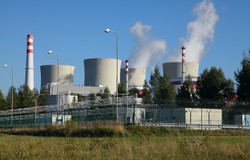Building a sustainable basis for radioactive waste disposal
Most European countries with nuclear power plants or research reactors have active waste management programmes. However, these programmes are financed differently around the EU and are in different stages of completion. In 2009, the European Commission launched an initiative called Implementing Geological Disposal of Radioactive Waste Technology Platform IGD-TP(opens in new window). With 128 participating organisations, the Platform aims to facilitate the stepwise implementation of safe, deep geological disposal facilities in Europe for spent fuel, high-level waste and other long-lived radioactive waste by 2025. The EU-funded SECIGD2 (Secretariat of the Implementing Geological Disposal of Radioactive Waste - Technology Platform – Phase 2) initiative worked to implement and coordinate activities of the IGD-TP through a previously established secretariat. Four waste management organisations from Belgium, France, the United Kingdom and Finland helped to fulfil the secretariat's tasks. By burying radioactive waste deep inside rock, geological disposal should ensure that no harmful quantities of radioactivity reach the surface over hundreds of thousands of years. Creating such disposal sites requires substantial knowledge and support, particularly for countries with less advanced geological disposal programmes. Through networking, training and coordination, SecIGD2 improved research and development to accelerate geological disposal capabilities in these countries. Further, SecIGD2 managed secretariat operations, informed the public of the benefits of geological disposal and trained end users in radioactive waste management. Through conferences and workshops, SecIGD2 gave waste management organisations, research centres, academics and non-governmental organisations the opportunity to express their views and initiate joint activities. The administrative, practical and operational support offered by SecIGD2 should ensure that the IGD-TP completes its objective to safely dispose European radioactive waste by 2025.



